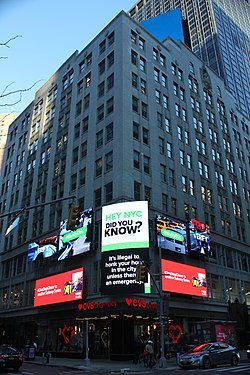
Tin Pan Alley was a collection of music publishers and songwriters in New York City that dominated the popular music of the United States in the late 19th and early 20th centuries. Originally, it referred to a specific location on West 28th Street, between Fifth and Sixth Avenues in the Flower District of Manhattan, as commemorated by a plaque on 28th Street between Broadway and Sixth.
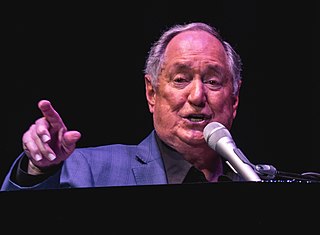
Neil Sedaka is an American singer, songwriter and pianist. Since his music career began in 1957, he has sold millions of records worldwide and has written or co-written over 500 songs for himself and other artists, collaborating mostly with lyricists Howard "Howie" Greenfield and Phil Cody.

Donald Kirshner was an American music publisher, music consultant, rock music producer, talent manager, and songwriter. Dubbed "the Man with the Golden Ear" by Time magazine, he was best known for managing songwriting talent as well as successful pop groups, such as the Monkees, Kansas, and the Archies.

Howard Greenfield was an American lyricist and songwriter, who for several years in the 1960s worked out of the famous Brill Building. He is best known for his successful songwriting collaborations, including one with Neil Sedaka from the late 1950s to the mid-1970s, and near-simultaneous songwriting partnerships with Jack Keller and Helen Miller throughout most of the 1960s.

Jack Walter Keller was an American composer, songwriter and record producer. He co-wrote, with Howard Greenfield and others, several pop hits in the late 1950s and early 1960s, including "Just Between You and Me", "Everybody's Somebody's Fool", "My Heart Has a Mind of Its Own", "Venus in Blue Jeans" and "Run to Him". He also wrote the theme songs for TV series including Bewitched and Gidget, and later worked in Los Angeles – where he wrote for, and produced, The Monkees – and in Nashville.

"On Broadway" is a song written by Barry Mann and Cynthia Weil in collaboration with the team of Jerry Leiber and Mike Stoller.

"Happy Birthday Sweet Sixteen" is a pop song released in 1961 by Neil Sedaka, who wrote the music and performed the song, with lyrics written by Howard Greenfield. The song is noted for being similar in musical structure to Take Good Care of My Baby by Bobby Vee, and additionally for its resemblance to the melody of the Chiffons' subsequent 1963 hit "One Fine Day". Both of these songs exhibiting similarity to "Happy Birthday Sweet Sixteen" were penned by the team of Carole King and Gerry Goffin. The song reached #6 on the Billboard Hot 100 chart and No. 3 on the UK Singles Chart.

Aldon Music was a New York–based music publishing company, founded by Don Kirshner and Al Nevins in 1958. Aldon is regarded as having played a significant role in shaping the Brill Building Sound in the late 1950s and 1960s.
Dimension Records was a record label founded in 1962 in New York City by Don Kirshner and Al Nevins, owners of Aldon Music. It concentrated on the girl group sound and showcased songs by Gerry Goffin and Carole King. Their composition "The Loco-Motion", sung by Little Eva, gave it its biggest hit. Background vocals on that record were by the Cookies, who had their own hits on the label, including "Chains", which was later recorded by the Beatles. In the UK, Dimension was licensed to London Records.

"Stupid Cupid" is a song written by Howard Greenfield and Neil Sedaka which became a hit for Connie Francis in 1958.
Albert "Al" Nevins was an American musician, producer, arranger, guitarist and violinist. He was also a member of pop trio The Three Suns, and is considered one of the major forces behind the evolution of the 1950s music into the early 1960s pop/rock music.
Florence Greenberg was an American record label owner, music executive, and record producer. Greenberg was the founder and owner of Tiara Records, Scepter Records, Hob Records, and Wand Records. She is best known for her work as a record producer and music executive for several popular singers in the 1960s including Dionne Warwick, the Shirelles, Tammi Terrell, Chuck Jackson, and B.J. Thomas.
Arthur Butler is an American composer, arranger, songwriter, and session musician. In a long career, he has been involved in numerous hit records and other recordings, and has been awarded over 60 gold and platinum albums.
"It Hurts to Be in Love" is a song written by Howard Greenfield and Helen Miller which was a Top Ten hit in 1964 for Gene Pitney. It was one in a long line of successful "Brill Building Sound" hits created by composers and arrangers working in New York City's Brill Building at 1619 Broadway.
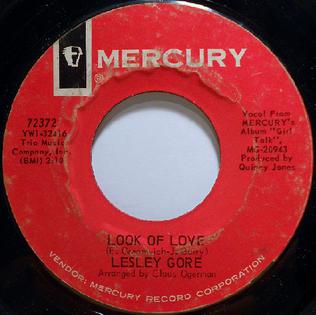
"Look of Love" is a song written by Ellie Greenwich and Jeff Barry, which was a 1964 Top 40 hit for Lesley Gore. The song was one in a long line of successful "Brill Building Sound" hits created by composers and arrangers working in New York City's Brill Building at 1619 Broadway. Pop songwriting stars Barry and Greenwich had previously scored hits with songs such as "Be My Baby" and "Baby, I Love You", and "Then He Kissed Me" and "Da Doo Ron Ron" . In the US, "Look of Love" peaked at #27 on the Billboard charts.
Helen Miller was an American songwriter. She collaborated with several lyricists, notably Howard Greenfield in the early 1960s, and with him wrote several pop hits, including "Foolish Little Girl" by The Shirelles, and "It Hurts To Be In Love" by Gene Pitney.
Artie Kaplan is an American recording artist, songwriter and a session musician. He has also been a music contractor where he was hired to musicians for sessions. In the 1960s, he was casting musicians for sessions for Aldon Music. When musician Joe Delia was asked about the best advice he had ever had, he said it was from Kaplan, who said "Always show up on time and bring a pencil."
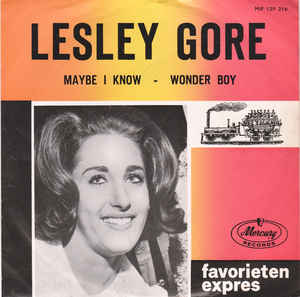
"Maybe I Know" is an early 1960s pop song written by Jeff Barry and Ellie Greenwich and performed by Lesley Gore. The song was produced by Quincy Jones and arranged by Claus Ogerman. It was featured on her 1964 album, Girl Talk.
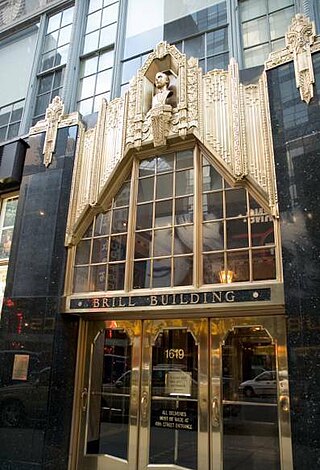
Brill Building is a subgenre of pop music that took its name from the Brill Building in New York City, where numerous teams of professional songwriters penned material for girl groups and teen idols during the early 1960s. The term has also become a metonym for the period in which those songwriting teams flourished. In actuality, most hits of the mid-1950s and early 1960s were written elsewhere.
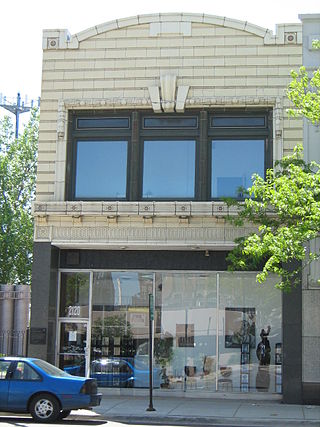
Though the music itself developed in African-American communities, the Jewish influence in rhythm and blues, particularly in terms of the music's presentation to a wider audience, was important. According to the Jewish writer, music publishing executive, and songwriter Arnold Shaw, during the 1940s in the United States there was generally little opportunity for Jews in the WASP-controlled realm of mass communications, but the music business was "wide open for Jews as it was for blacks". Jews played a key role in developing and popularizing African American music, including rhythm and blues, and the independent record business was dominated by young Jewish men, and some women, who promoted the sounds of black music.
